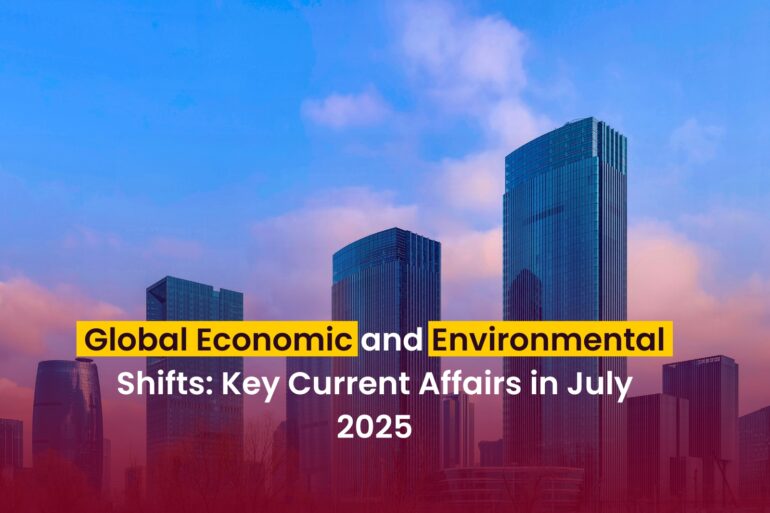The global economic landscape in 2025 is marked by dynamic shifts, with financial institutions and economic policies adapting to both regional and international trends. Among the standout developments is the remarkable performance of First Abu Dhabi Bank (FAB), which reported a 23% year-on-year increase in net profit, reaching AED 5.13 billion ($1.4 billion) in the first quarter of 2025. This achievement, announced on April 29, 2025, reflects FAB’s ability to capitalize on the UAE’s robust economic growth, projected at 5.2% for the year, and its strategic international expansion across 20 markets, including the UK, US, Brazil, and India. FAB’s diversified revenue streams, with non-funded income comprising 43% of group revenue and fees and commissions rising to AED 1.2 billion, highlight its operational strength. The bank’s focus on sustainable finance, with AED 284 billion facilitated toward a 2030 target of AED 500 billion, and its top-tier ESG ratings further solidify its leadership in the region’s financial sector. However, challenges such as geopolitical risks and potential global economic slowdowns in markets like the US and Europe remain concerns for sustained growth.
The global economic landscape in 2025 is marked by dynamic shifts, with financial institutions and economic policies adapting to both regional and international trends. Among the standout developments is the remarkable performance of First Abu Dhabi Bank (FAB), which reported a 23% year-on-year increase in net profit, reaching AED 5.13 billion ($1.4 billion) in the first quarter of 2025. This achievement, announced on April 29, 2025, reflects FAB’s ability to capitalize on the UAE’s robust economic growth, projected at 5.2% for the year, and its strategic international expansion across 20 markets, including the UK, US, Brazil, and India. FAB’s diversified revenue streams, with non-funded income comprising 43% of group revenue and fees and commissions rising to AED 1.2 billion, highlight its operational strength. The bank’s focus on sustainable finance, with AED 284 billion facilitated toward a 2030 target of AED 500 billion, and its top-tier ESG ratings further solidify its leadership in the region’s financial sector. However, challenges such as geopolitical risks and potential global economic slowdowns in markets like the US and Europe remain concerns for sustained growth.
In Egypt, foreign currency reserves reached a record $48.7 billion in June 2025, driven by a 77% year-on-year surge in remittances, totaling $29 billion in the first ten months of the fiscal year 2024–25. The Central Bank of Egypt’s currency liberalization in March 2024, coupled with a 6% interest rate hike, incentivized expatriates to use formal banking channels, boosting liquidity and stabilizing the Egyptian pound at around 40 EGP per USD. Major external financing, including a $35 billion UAE investment in Ras El Hekma and $22 billion from the IMF, EU, and World Bank, has further supported Egypt’s economic recovery. The country’s tourism sector is projected to generate $15.3 billion in 2025, while non-oil exports rose 33% in the same period. Despite these gains, inflation at 28.15% in May 2025 and regional geopolitical tensions pose ongoing risks. Egypt’s reserve growth signals a strong trajectory toward its ambitious $300 billion target over the next six years.
India’s economic and diplomatic activities have also been prominent in 2025. The Petroleum and Natural Gas Regulatory Board (PNGRB) approved the Second Amendment to the Natural Gas Pipeline Tariff, streamlining energy sector regulations. Meanwhile, India’s agricultural sector projects record wheat (117.5 million metric tons) and rice (149 million tons) production by June 2025, driven by high-yield seeds and favorable weather. Diplomatically, Prime Minister Narendra Modi’s visits to Brazil for the BRICS summit and Argentina, marking the first such bilateral visit in 57 years, underscore India’s growing global influence. However, tensions with Pakistan, highlighted by the Pahalgam terror attack and subsequent military and diplomatic responses, have prompted India to launch a global campaign framing its actions as counterterrorism measures.
On the environmental front, Europe has faced an unprecedented heatwave since late June 2025, with record temperatures in Spain (46°C), France (40°C), and Italy, exacerbating concerns about climate change. The International Conference on Glaciers’ Preservation in Tajikistan, part of the 2025 International Year of Glacier Preservation, emphasized urgent action to combat glacier melt, particularly in the Himalayas, where only 25–45% of ice may remain by century’s end under current warming scenarios. These environmental challenges highlight the need for global cooperation, as seen in the EU’s new 2040 climate targets announced on July 2, 2025.
In technology and innovation, India’s chemical industry, contributing 7% to GDP, is poised for growth but faces challenges due to low R&D investment (0.7% compared to the global 2.3% average). NITI Aayog’s report on July 3, 2025, emphasized integrating India into global value chains to boost competitiveness. Additionally, the Solar Energy Corporation of India (SECI), soon to be renamed the Renewable Energy Corporation of India (RECI), has executed over 60 GW of renewable energy agreements, aligning with India’s net-zero goals. The Office of the Principal Scientific Adviser’s report on Zero-Emission Trucking (ZET) adoption further underscores India’s commitment to sustainable innovation.
These developments reflect a world navigating economic resilience, environmental urgency, and geopolitical complexities. From FAB’s financial triumphs to Egypt’s reserve milestone and India’s multifaceted progress, 2025 showcases the interplay of policy, innovation, and global cooperation in shaping a dynamic future. Staying informed through reliable sources like The Hindu, The Economic Times, and Adda247 is crucial for understanding these trends, particularly for competitive exam aspirants preparing for UPSC, banking, and other government exams.

